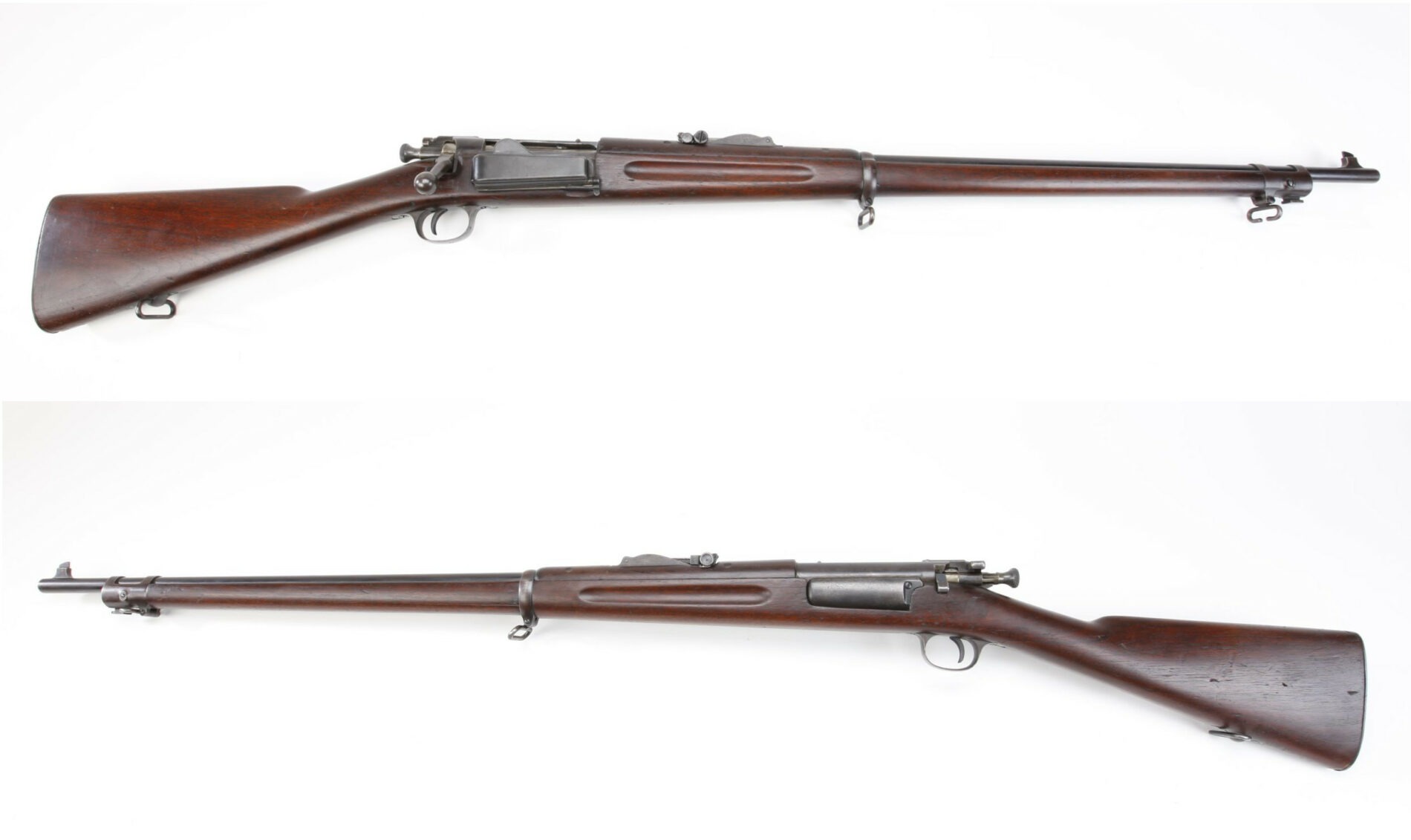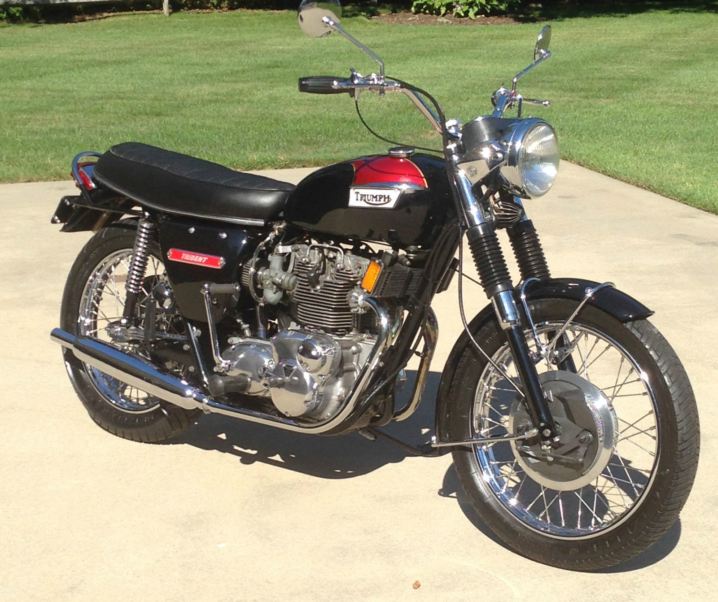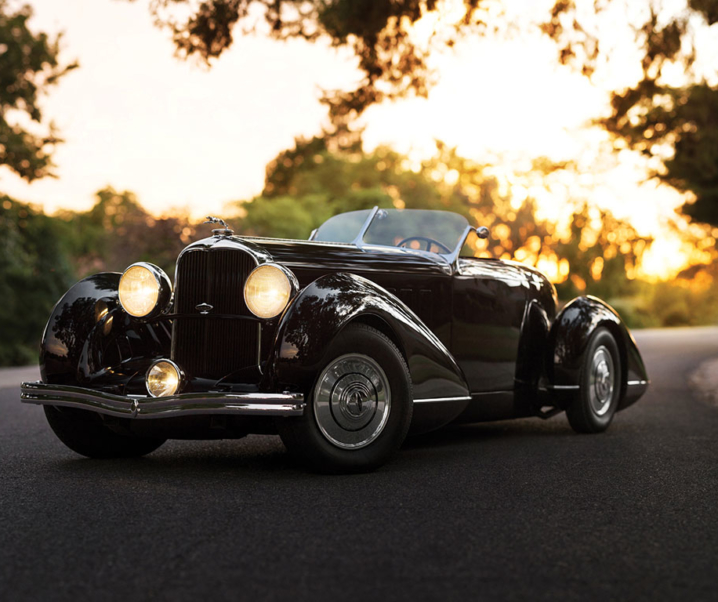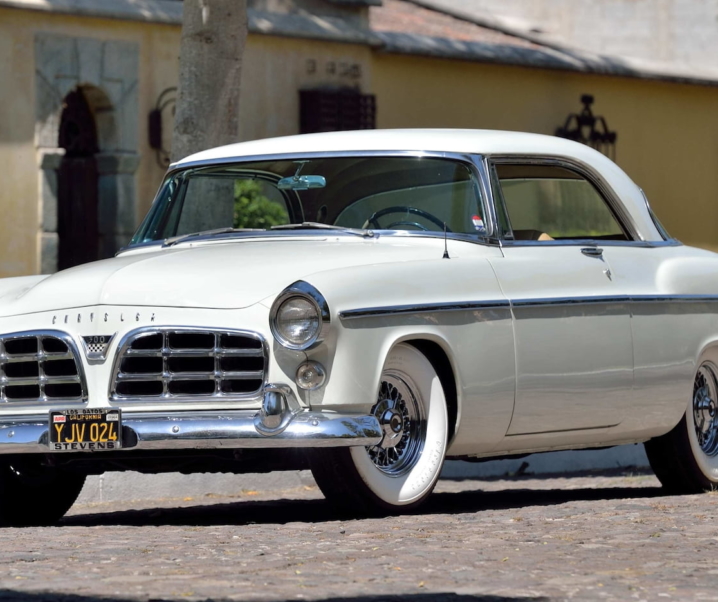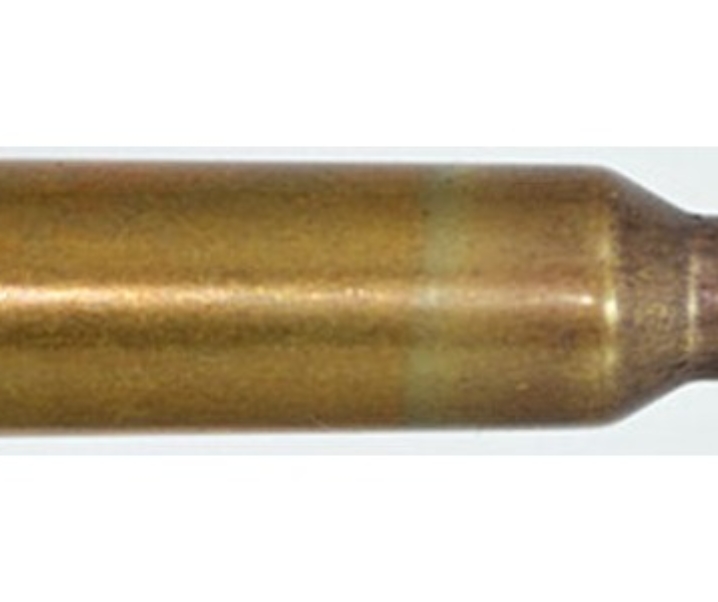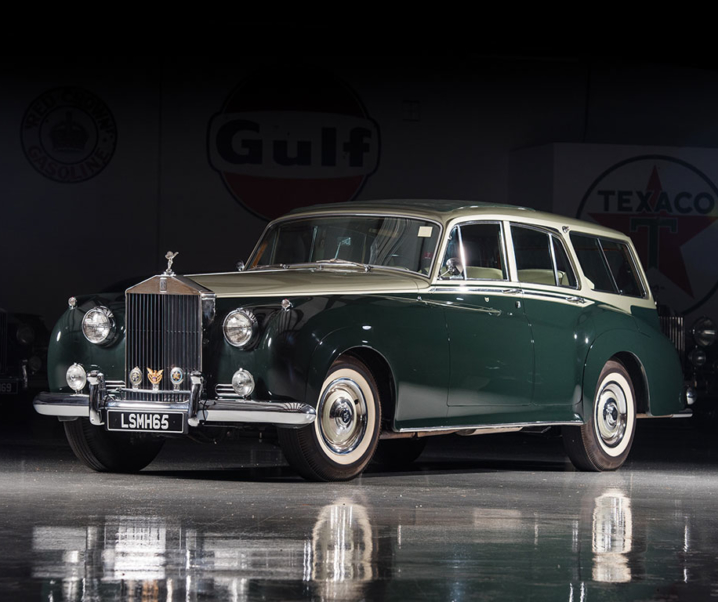The Krag Jørgensen was a superb rifle, chosen from among fifty three rivals and adopted by the United States as its first nitro powder military rifle. The Krag’s served their country through some tempestuous times seeing service in Cuba, the Philippines and China, before being superseded by the M1903 Springfield.
Krags were sold as military surplus and were common hunting and target rifles through the years of the Great Depression. They are one of the smoothest rifle actions extant and have a remarkable and imaginative magazine.
Fast Facts
- The Krag Jørgensen was chosen from a field of 53 military rifles to be the new US service rifle in 1892.
- The rifle offered a number of desirable features, not least of which was its “half-capsule” magazine.
- The half-capsule magazine was a box type which had a door that opened to the side of the action and which was loaded by simply dropping the required number of cartridges point forward into it. When the box door was closed it automatically aligned the cartridges and set them ready to feed for firing.
- The cartridge for the Springfield Krag Jørgensen was the 30-40 which fired a 220 grain .308″ bullet at 2,000fps from the 30 inch barrel of the rifle.
- The Springfield Krag Jørgensen was made in a rifle version with a 30 inch barrel and a carbine with a 22 inch barrel.
- The rifle was in US service from 1892-1906 and it was superseded by the Springfield M1903 chambered initially for the 30-03 and then the 30-06 cartridge.
As the armed forces of the world made their move from black powder to the nitro based smokeless propellants made possible by the work of Alfred Nobel, the US Military was faced with the need to modernize its firearms so they would have viable weapons for use against enemies foreign and domestic.
The US Army was looking to replace its single-shot Trapdoor Springfield rifle which was chambered for the black-powder 45-70 cartridge.
To accomplish this task with the best possible hope for success the US Army tested a field of over fifty test rifles which included various turn-bolt and straight-pull rifles.
As a result of all this testing the US Army settled on a rather unusual rifle that had been created in the European nation of Norway: the Krag–Jørgensen.
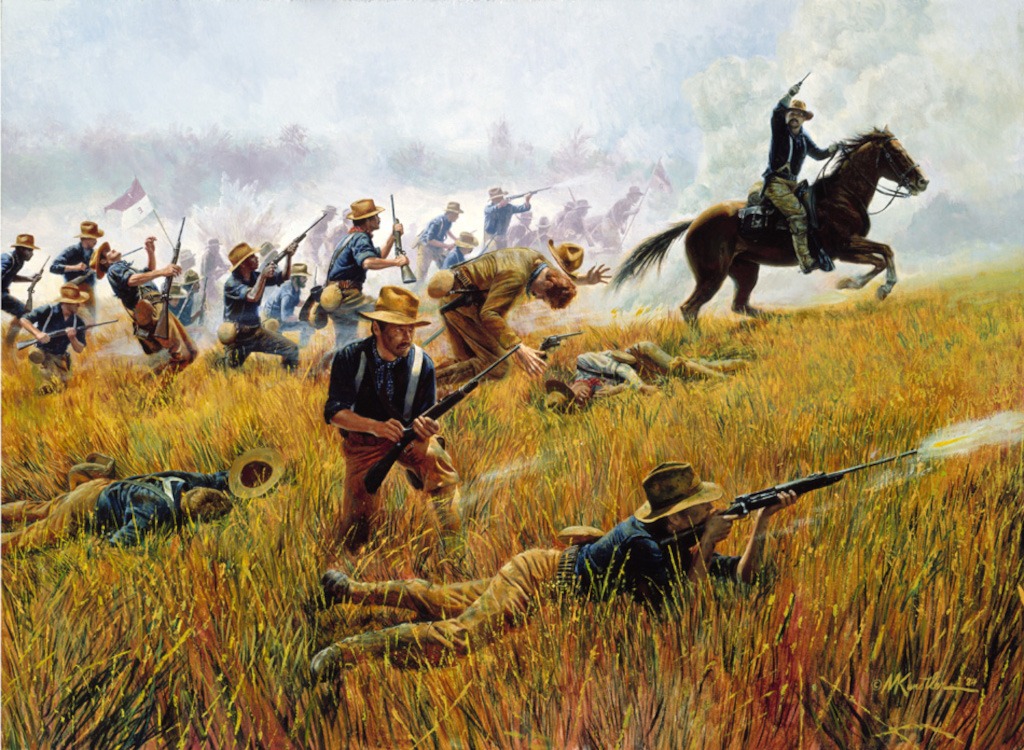
The Krag–Jørgensen had been designed by Norwegians Ole Herman Johannes Krag and Erik Jørgensen around 1885, and like many designs of this era it was highly creative as befitted the rapid developments that were happening in firearm design and the new nitro smokeless powders that made possible things that had previously been impossible.
The style of warfare had also changed. The new weapons required new tactics and those new tactics imposed design preferences to suit them.
In this period rifle actions that used an under-lever were not preferred in part because a soldier was to do much of his shooting from the prone position with his rifle needing to be close to the ground: so turn-bolt and straight-pull actions emerged as the preferred types.
The Krag–Jørgensen rifle featured a turn-bolt action with a single front locking lug, and two backup lugs. the first of these backup lugs was the anti-bind rail, which sat under the top mounted extractor when the action was open, and which, when the action was closed, rotated down to sit near the front of the split receiver bridge at the rear of the ejection port. The second back-up lug was the bolt handle root engaging in a slot in the rear of the receiver.
Of these three the front lug was bearing so it was designed to take the full force of the cartridge bolt thrust.
When the action was closed and the bolt handle rotated downwards this front locking lug engaged into a lug recess to the right of and below the breech-face. The ejection port was large enough for easy access and the way the action was designed left the breech easily accessible so that a stuck cartridge or case could be pried out with a knife or screwdriver blade: a very useful feature.
For this action design the ammunition needed to be kept to around 40,000 psi breech pressure, and at this level the Krag action was safe and dependable.
The action was cock-on-opening, smooth, reliable, and very fast to operate for a practiced rifleman. It also included a cocking piece so it could be manually re-cocked in the event of a failure to fire or hang-fire.
The safety catch was of the “flag” type which, like on the Mauser, rotated up into a vertical position if engaged and rotated down to the left out of the shooter’s line of vision if the rifle was ready to fire.
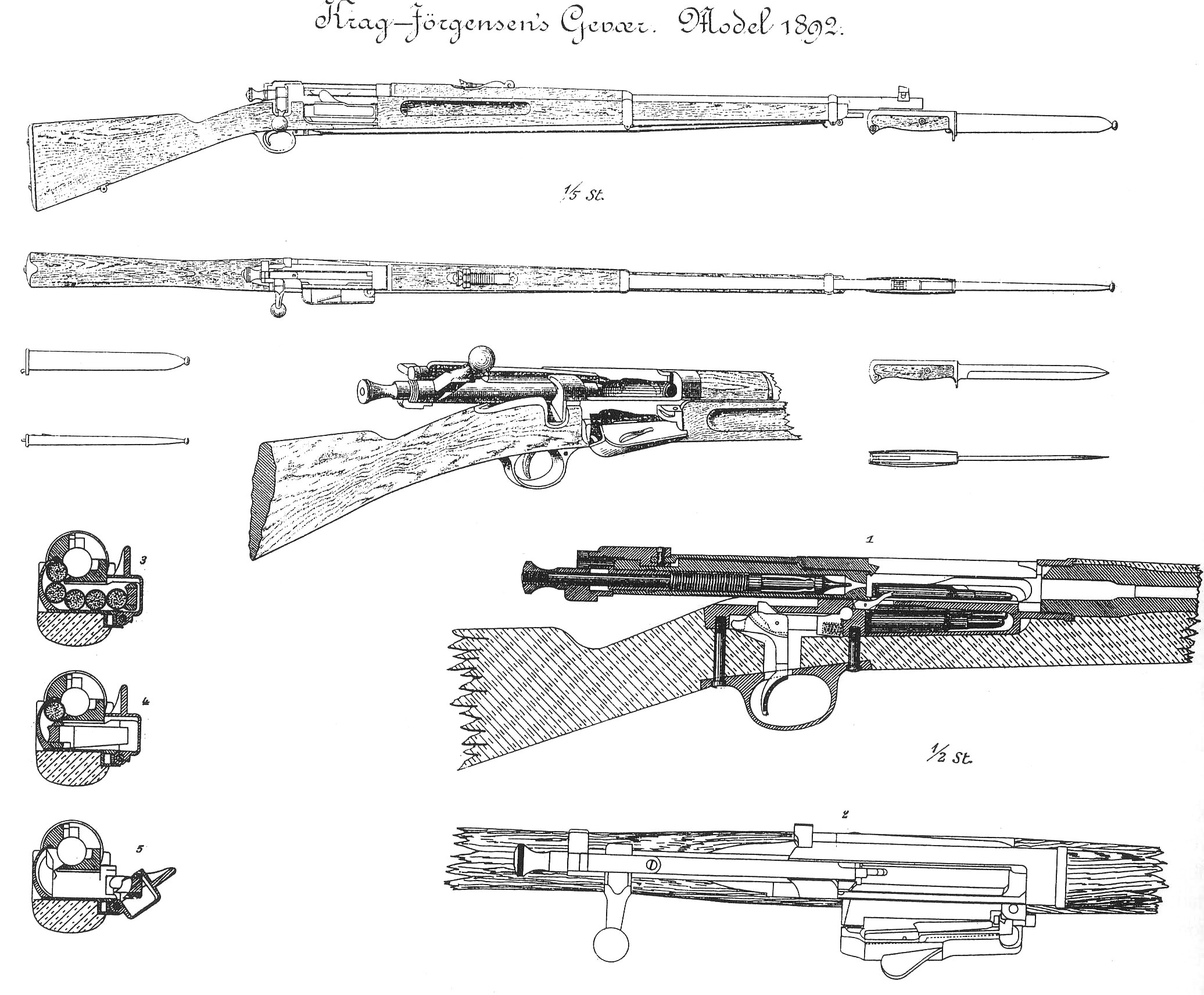
A unique feature of the Krag–Jørgensen design was its “capsule magazine”. This was created by master gunsmith Erik Jørgensen. This capsule magazine in its first iteration held ten rounds and wrapped around the bolt-action. This version proved to make the rifle too heavy and bulky for practical use so Jørgensen re-designed it as a five round “half-capsule” magazine which sat to the right side and underside of the bolt action.
Jørgensen’s magazine had a box located on the right side of the action and on the US Springfield version had a door that rotated in the horizontal plane to the right and down to open it ready for loading.
Into that open door the rifleman could simply drop in the required number of cartridges, no need to line them up, as long as the points were all in the correct direction. The magazine door could then be rotated closed and the cartridges would all be automatically lined up.
This magazine was able to be topped up as required while the shooter had a cartridge chambered ready to fire. There was no need to open the bolt, the magazine door could be opened, the required number of rounds dropped in, and then the door closed. So the system offered the same sort of convenience as the typical lever-action rifle with a side loading gate.
The Krag’s magazine also included a magazine cut-off with its control located at the left-rear of the receiver bridge. As its name suggests the cut-off acted to cut off the feed of cartridges in the magazine, this normally would be done to keep the magazine in reserve pending an enemy charge or similar emergency.
The Krag was able to be single loaded without problems so with the cut-off engaged the rifle could be used as a single shot, and able to be instantly given access to its magazine if the cut-off was disengaged.
The first US version of the Krag–Jørgensen was the M1892 and this and all subsequent US variants were made by Springfield. The M1892 was a full length infantry rifle which had a thirty inch barrel and was stocked its full length with a cleaning rod fitted in the stock underneath the barrel.
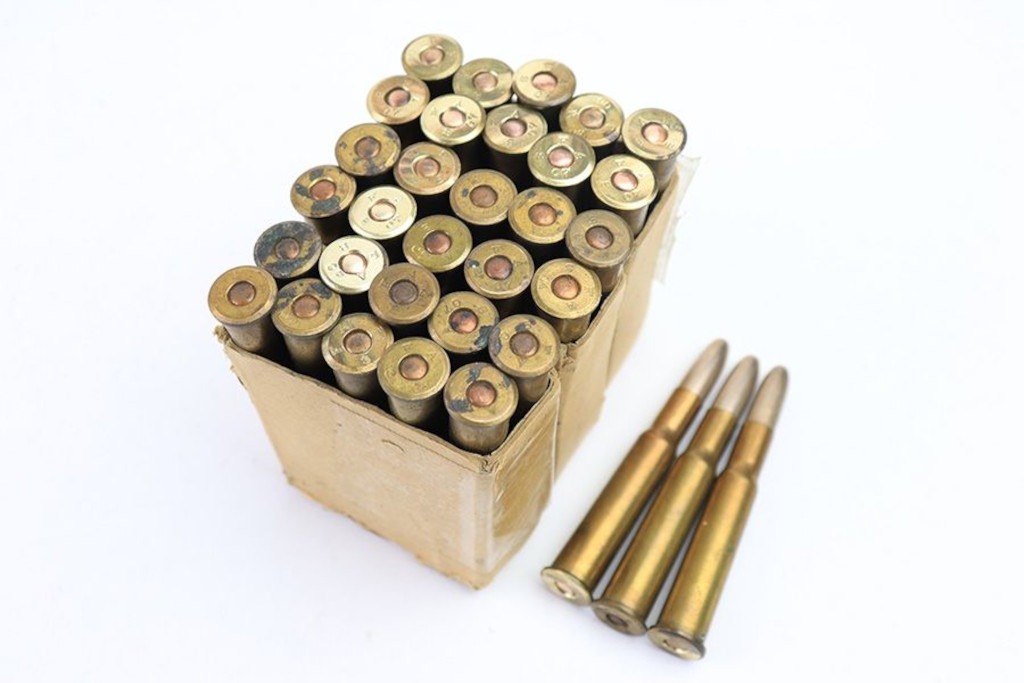
The cartridge for this rifle was the .30 Army, which would later become known as the 30-40 Krag. The 30-40 designation in this case indicates the cartridge was of .30″ calibre (bullet diameter of .308″) and the case held 40 grains of nitrocellulose powder.
The 30-40 was never a black-powder cartridge, although sometimes you may hear a claim that it was.
The .30 Army was almost identical to the British .303 service cartridge. The two are very similar in dimensions and performance. It was a rimmed cartridge and fired a 220 grain full metal jacket bullet at a muzzle velocity of 2,000fps from the 30 inch barrel of the standard rifle, and 1,960fps from the 22 inch barrel of the later carbine versions.
The choice of a rimmed cartridge for both the .30 Army and the .303 British was to ensure reliable extraction, and the cartridge cases were tapered to ensure reliable feeding.
The singular downside was the potential for rim hang-up. (For the .303. British there is a method of loading stripper clips that prevents rim hang-up). The Krag’s half-capsule magazine seems to overcome that potential problem well.
Variations
- The first model of the U.S. Springfield Armory Krag–Jørgensen rifle was the Model 1892. This rifle had a thirty inch barrel, was stocked to the muzzle, and had a cleaning rod stored in the fore-end of the stock. In this model the magazine cut-off is engaged in the up position.
- The second variant made in 1892 was a cavalry carbine with a twenty-two inch barrel. This was an early prototype and the actual cavalry carbine that would enter regular service was not made until 1896.
- The M1896 rifle was an improved version based on the practical lessons learned from the M1892. For this model the magazine cut-off is engaged in the down position and the cleaning rod re-located to the butt-stock. The stock wood was made thicker in places where it needed to be.
- The M1896 Cadet Rifle was a small production run version, four hundred were made. These rifles have the cleaning rod fitted in the fore-end like the M1892.
- M1896 Carbine featured a twenty-two inch barrel and shortened fore-end. The magazine cut-off operated downwards and cleaning rod was located in the butt-stock.
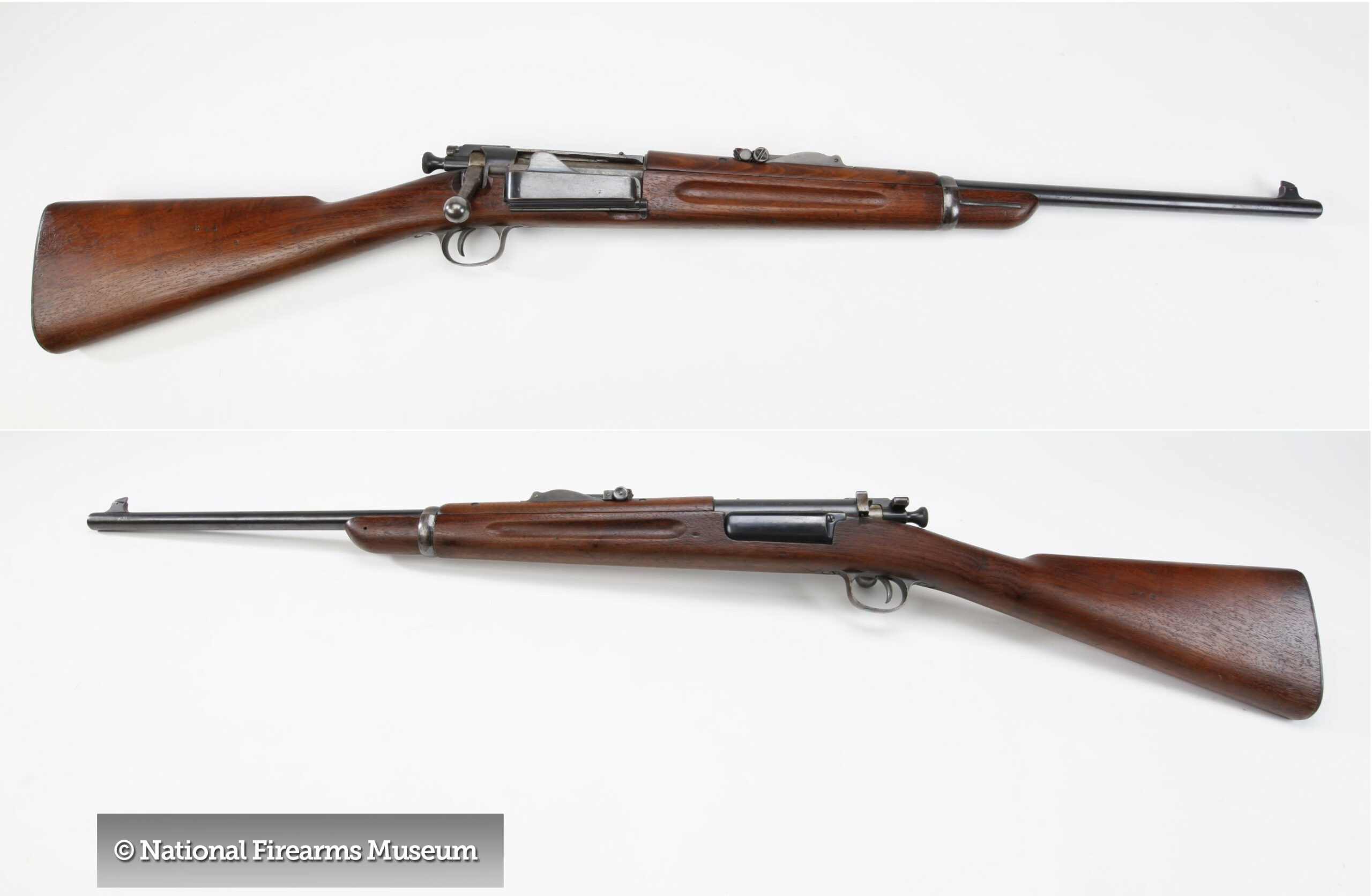
- M1898 Rifle and M1898 Carbine were updated versions of their M1896 siblings. In this model the steel recess in the rear of the action into which the bolt fitted when closed was omitted. This would seem to have been done to simplify the complexity involved in making the action.
- M1899 Carbine featured a longer fore-end and did not have a sling swivel.
- M1899 Constabulary Carbine was made for the Philippines with a full-length stock and barrel tapered down for bayonet fitting.
The Springfield Krag Rifle in US Service
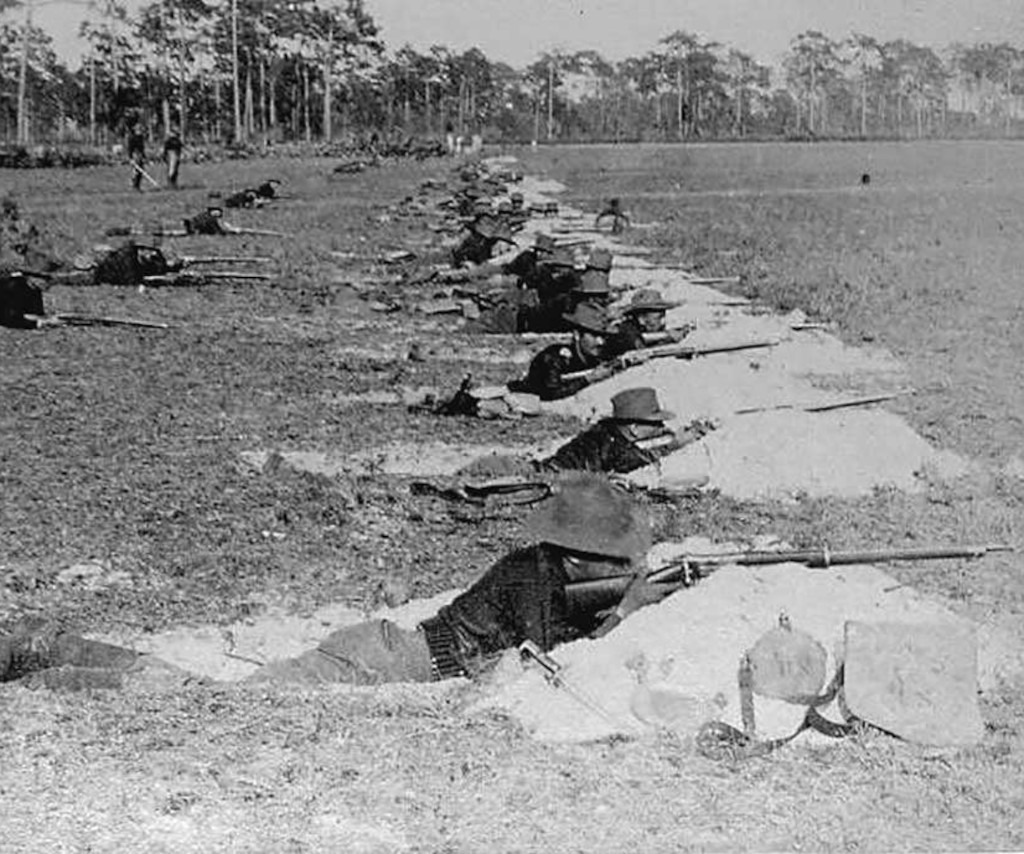
The Krag Jørgensen military rifle was adopted into US service in 1892 and beginning in 1894 the workers of the Springfield Armory set to work to making the quantities needed for the United States military needs of that period of history.
The number that Springfield would turn out would finish up being around the half-million mark, ending in 1904.
The Springfield Krag would be the United States first line military rifle up until 1903 when it was progressively superseded by the Springfield 1903 initially loaded with the 30-03 cartridge which was then superseded by the 30-06 in 1906.
Krag rifles remained in front-line service until 1906 and beyond.
This was a tumultuous time and the United States was being drawn into international conflicts with Spain and her colonies in Cuba and the Philippines. Then later involvement in the suppression of the Boxer Rebellion in China.
The first major conflict in which the Krag rifles saw action was the Spanish-American War of April to December 1898: a mere four years after production of Krag rifles had begun at Springfield.
The US military could only field around 30,000 Krag rifles at the time of the outbreak of the Spanish-American War on 21st April, 1898. This was sufficient to arm the regular army which numbered 24,593 soldiers. But it was way short of the troop and equipment requirements to wage a war against Spain, beginning in Cuba.
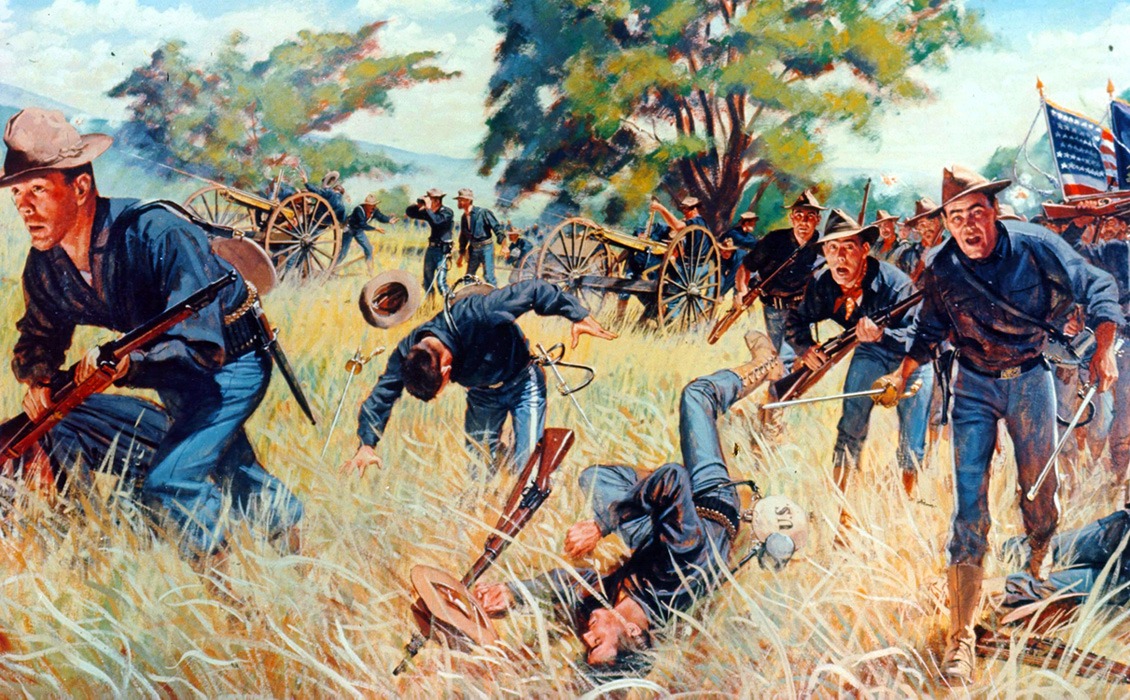
There was a great deal of both propaganda and dissension surrounding the idea of the US going to war against Spain, but the explosion aboard the USS Maine which was at that time in Havana Harbour to safeguard US interests proved to be the match that ignited the flames of war.
Despite the fact that the USS Maine explosion may have been caused by an accident on board there were those who claimed that the ship had been subject to underwater mine attack, and there were voices that pushed the idea “Remember the Maine! To hell with Spain!” with the result that when the US military called for volunteers, hoping to get about 50,000 for the war. But such was the force of the propaganda that they were literally inundated with 220,000 volunteers.
New volunteer units were formed but the lack of new Krag rifles meant that many if not most of these volunteer units were armed with the old M1873 Springfield “Trapdoor” single shot rifles chambered for the black-powder 45-70 cartridge.
American politician Teddy Roosevelt was one who formed a volunteer unit which came to be known as the “Rough Riders” and was able to lobby to have them armed with Krag carbines. They only received them within days of boarding ship to sail to Cuba and so had precious little time to acclimatize to them.
The battle in which the Krag rifle and the US soldiers using them were tested was the Battle of San Juan Hill which took place on 1st July, 1898.
The Spanish soldiers were armed with Mauser M1893 bolt-action rifles chambered for the 7×57 cartridge. The 7×57 sent a ballistically fairly efficient bullet at a crisp 2,330fps (710 m/s) in the direction of the enemies of Spain and provided a significant advantage over the 2,000fps managed by the 30-40 Krag.
The added advantage for the Spanish defenders was that their Mauser M1893 rifles were loaded by stripper clips, five rounds at a time. This provided the Spaniards with the ability to maintain a very high rate of aimed fire – mad minute by mad minute. Thus equipped they were able to inflict high casualties on the Americans as they assaulted the Spanish positions.
It would be as a result of their experience at Kettle Hill and San Juan Hill that the US military would come to re-evaluate the Krag rifle and make the decision to upgrade with some urgency.
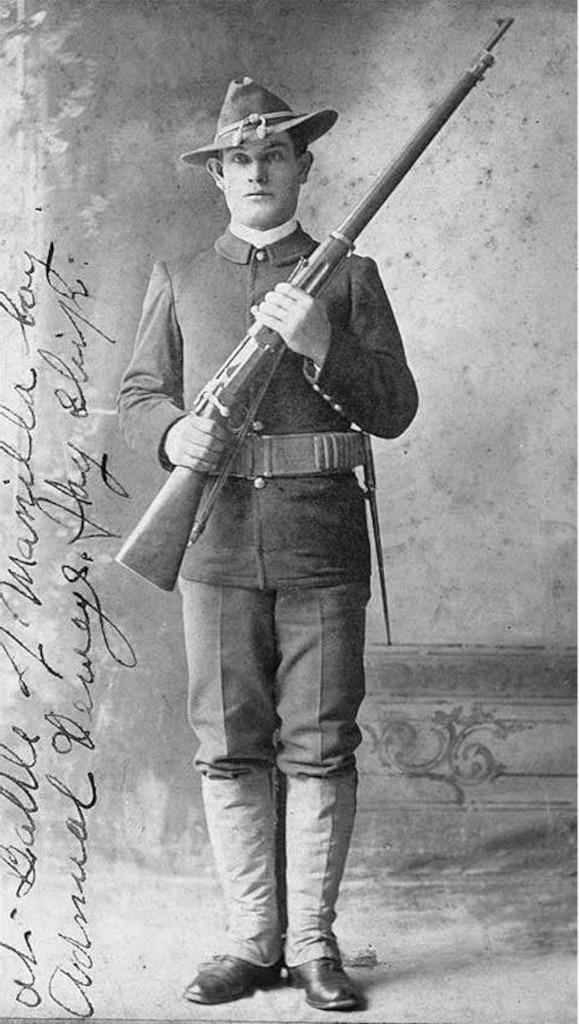
The new US rifle that would emerge from that re-evaluation would be the 1903 Springfield, a rifle so similar to the Mauser design that Mauser was able to successfully sue for patent infringement.
The 1903 Springfield initially used the 30-03 cartridge with a heavy round nosed bullet, but this was rapidly replaced in 1906 with the 30-06 using an aerodynamic high velocity spitzer bullet, a cartridge that proved to be so good that it has survived and prospered as a sporting rifle cartridge through to the present day.
So it was that the Krag rifle would only last as the US main rifle for a short eleven years before being phased out
Those eleven years were filled with a great deal of action however. After the successful American campaign in Cuba the Krag rifles were taken to the Philippines to end Spain’s colonization. Then with that successfully accomplished there were elements in the Philippines who wanted full independence and self-rule: which led the US into the Philippine-American War of 1899-1902.
Ultimately the US was able to hand over the job of dealing with the insurgents to the Philippine Constabulary and created a version of the Krag specifically for them: the M1899 Philippine Constabulary Carbine which featured a shortened stock to better suit the smaller stature of the Philippine officers, and a 22 inch carbine barrel turned down and modified to enable fitting of the standard bayonet.
The Krag rifles were used in as front-line weapons during the Boxer Rebellion in China, particularly the breaking of the siege of the foreign legations in Peking between June 20 – August 14, 1900.
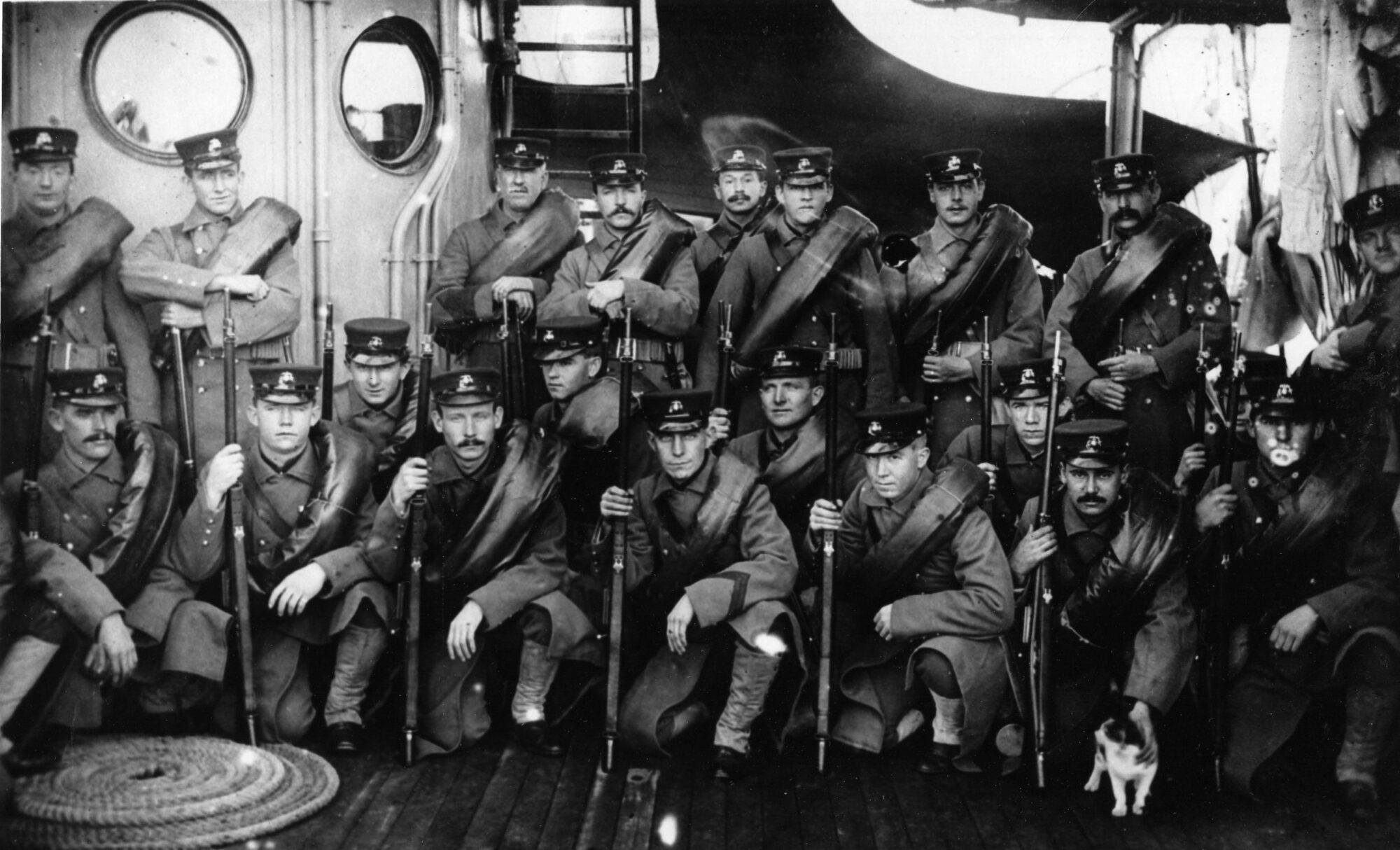
The Boxers were a Chinese faction who wanted to rid China of all foreign influences, religious, political, philosophical etc. They were the “Society of Righteous and Harmonious Fists” (義和拳), martial arts exponents skilled in both unarmed and armed combat.
With their defeat China remained open to foreign political influence, ultimately to the socialist doctrines of German Karl Marx which forms the foundation of China’s government to this day.
Conclusion
The Springfield Krag rifle remained as a front-line rifle beyond 1904-1906 and as it was progressively superseded by the M1903 Springfield as a reserve/second-line rifle in US service up to the Great War (First World War). The surviving rifles then found their way onto the surplus market where they were purchased in large numbers by civilians: some for target shooting and some for recreational hunting.
Some of these rifles were kept in their original state while others were customized to become sporting rifles.
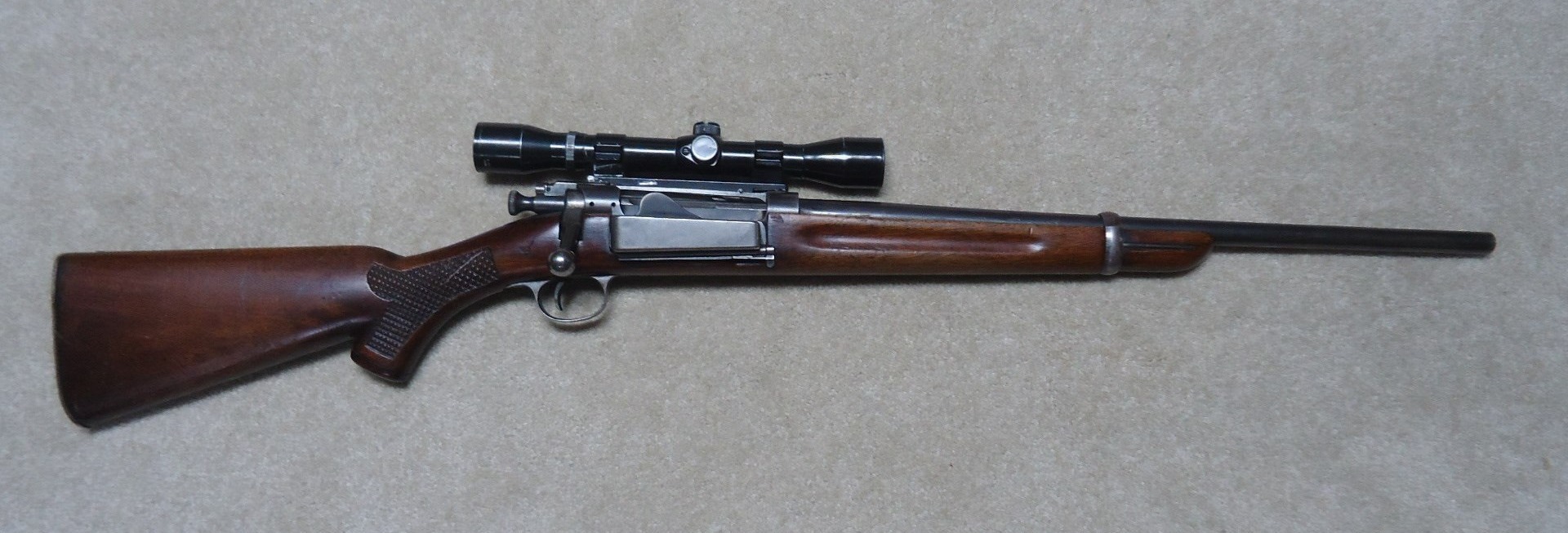
(Note: You can find the sale page for the above rifle if you click here).
(Note-2: Krag rifles appear at Rock Island Auction, both original and sporter.)
The Krag Jørgensen was believed to be the right choice of rifle for the US military when it was trialed against over fifty other rifles back when it was adopted back in 1892. It had a string of highly desirable features, not least of which was its easy loading and durability.
But the US examiners had not realized the importance of stripper-clip loading, nor do they seem to have embraced the importance of a large magazine capacity. By comparison the British already had significant field experience in dealing with international adversaries and so although they chose a cartridge that was near identical with the 30-40 Krag they chose a rifle that had stripper-clip loading and a ten-round magazine.
The result of those choices are historic: the Krag lasted in US service for eleven years, the British Lee-Enfield was Britain’s front-line rifle through the two world wars and saw use as a sniper rifle after that.
That being said the Krag Jørgensen remains a fabulous rifle with a near legendary smooth action and easy loading/unloading. It was a superb choice back in 1892 and if you have one sitting in your gun-cabinet it continues to be a great rifle whether you want to shoot targets or deer with it.
Great design, and well made. One of the great rifles of US history.

Picture Credits: Springfield Krag M1896 picture at the head of this post courtesy the NRA Museum. All other pictures as individually credited.

Jon Branch is the founder and senior editor of Revivaler and has written a significant number of articles for various publications including official Buying Guides for eBay, classic car articles for Hagerty, magazine articles for both the Australian Shooters Journal and the Australian Shooter, and he’s a long time contributor to Silodrome.
Jon has done radio, television, magazine and newspaper interviews on various issues, and has traveled extensively, having lived in Britain, Australia, China and Hong Kong. His travels have taken him to Indonesia, Israel, Italy, Japan and a number of other countries. He has studied the Japanese sword arts and has a long history of involvement in the shooting sports, which has included authoring submissions to government on various firearms related issues and assisting in the design and establishment of shooting ranges.

